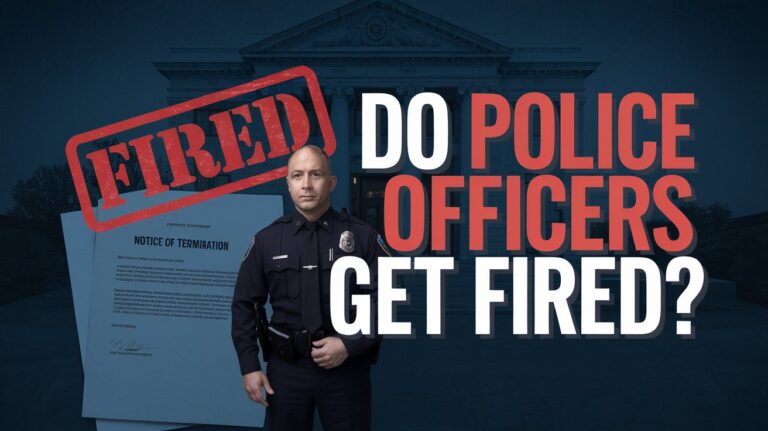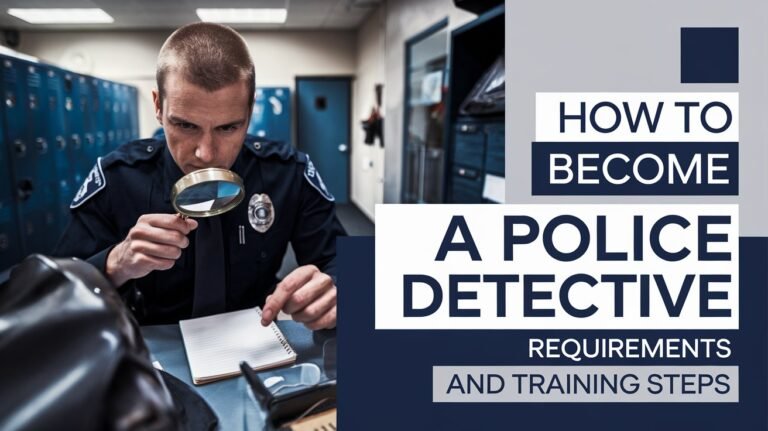What Is a Non-Emergency Police Number? When & How to Use Them

Ever wondered what to do when you need police help but it’s not urgent? Non-emergency police numbers are here to help. They let you get in touch with local law enforcement without clogging up 911 lines. But, how do you know when to call them? Let’s explore the world of non-emergency police help together.
What Is a Non-Emergency Police Number?
Non-emergency police numbers are for situations that don’t need an immediate response. They connect you to police stations or dispatch centers. You can report minor crimes, ask for information, or talk about non-urgent community issues.
Unlike 911, which is for life-threatening emergencies, these lines handle a variety of non-urgent issues. They don’t pose an immediate danger to public safety.
Definition and Basic Concepts
Non-emergency police numbers are different from 911. They let you contact law enforcement for non-urgent matters. You can report incidents, request services, or get general information without clogging the emergency system.
Key Differences from Emergency Numbers
The main difference is the type of situations they handle. 911 is for emergencies that need immediate help. Non-emergency lines are for less urgent issues that can wait.
This way, 911 can focus on critical situations. It ensures a quick emergency response.
Primary Functions and Services
Non-emergency police numbers have several uses. You can report minor crimes, like vandalism or theft. You can also ask about community policing services or address non-urgent issues like noise complaints.
These lines offer an alternative to 911. They help manage emergency responses better and make sure community policing resources are used well.
| Examples of Non-Emergency Situations | Examples of Emergency Situations |
|---|---|
| Reporting a minor theft or vandalism | Reporting an active robbery or assault |
| Requesting information about community policing services | Reporting a fire or medical emergency requiring immediate assistance |
| Addressing non-urgent concerns like noise complaints | Reporting a life-threatening situation or an active crime in progress |
Types of Situations for Non-Emergency Police Contact
It’s important to know when to call the police. For urgent needs like emergencies, dial 9-1-1. But for non-urgent issues, use the local non-emergency number or report online.
Non-emergency calls are for situations without immediate danger. This includes reporting theft, vandalism, or non-injury accidents. You can also report suspicious activities or ask for safety checks.
Think carefully before calling the police. Some situations might be better handled by others. Online reporting tools make it easier to report non-urgent incidents.
Calling 9-1-1 for non-emergencies won’t get you help faster. Give as much detail as you can, like addresses and license numbers. Try to call during less busy times to avoid long waits.
Knowing when to use non-emergency police services helps keep our communities safe. It also shows respect for emergency services.
Directory of Non-Emergency Police Numbers by State
Finding the right non-emergency police number can be tricky. It changes by state and city. We’ve made a big list of police numbers for each state in the U.S. to make talking to the police easier.
West Coast and Pacific Region
On the West Coast, you can call 877-275-5273 for Los Angeles, 415-553-0123 for San Francisco, and 206-625-5011 for Seattle. In the Pacific, Honolulu’s number is 808-529-3111.
East Coast Numbers
On the East Coast, New York City’s number is 311. Boston and Philadelphia are 617-343-4200 and 215-686-8477, respectively. Miami’s number is 305-4-POLICE (305-476-5423).
Central States Contact Information
In the Central United States, call 312-746-6000 in Chicago, 713-884-3131 in Houston, and 816-234-5111 in Kansas City, Missouri.
| State | Non-Emergency Police Number | City |
|---|---|---|
| Alabama | 334-242-0982 | Birmingham |
| California | 415-553-0123 | San Francisco |
| Idaho | 208-570-2007 | Boise |
| Louisiana | 225-389-2000 | Baton Rouge |
| Massachusetts | 617-343-4200 | Boston |
Reporting Process Through Non-Emergency Lines
When you call a non-emergency police number, it’s important to have all the details ready. You should know the exact location, time, and a full description of what happened. Also, mention any people involved. The person taking your call will ask you questions to get all the information they need.
Some police departments let you report certain incidents online. This makes it easier and quicker to report things like property damage, theft, or vandalism. It’s a good option if you can’t call or prefer to report online.
- Clearly state the location and time of the incident.
- Provide a detailed description of the events and any involved parties.
- Be ready to answer specific questions from the call-taker to help them assess the situation.
- Inquire about the option to file a report online if available in your area.
Following these steps, you can make sure you’re using the non-emergency police line right. This way, you give the right information to the authorities. It helps them handle police report filing and non-urgent incident reporting better. This supports public safety efforts.
| Year | Internal Investigations | Sustained Cases | Exonerations | Resignations/Suspensions |
|---|---|---|---|---|
| 2023 | 3 | 2 | 1 | 2 (3-day and 30-day suspensions) |
| 2022 | 3 | 1 | 1 | 2 (employees retired/resigned before completion) |
| 2021 | 3 | 2 | 0 | 2 (employees resigned before completion) |
| 2020 | 3 | 0 | 0 | 0 |
Essential Information to Provide During Your Call
When you call the police, it’s important to have key details ready. This ensures a proper response to your situation. Here’s what you should be prepared to share during your call.
Location and Time Details
The first thing to share is the exact location of the incident. Give the full address, including street number, name, and city. If it’s at an intersection, state the cross streets.
Also, mention the time the incident happened or when you noticed it.
Personal Information Requirements
You don’t always have to share personal info when calling the police. But, if asked for your name, phone number, or other details, be ready. This helps the police follow up if needed.
Incident Description Guidelines
Describe the incident clearly and briefly. Share details like the issue’s nature, people or vehicles involved, and any other important info. Remember to use the “CYMBALS” acronym for vehicle details: Color, Year, Make, Body style, Anything else, License plate, and State.
For people, include sex, race, height, weight, hair and eye color, and what they’re wearing. Having this info ready helps the police line handle your call well.
Alternative Methods of Police Contact
Technology and community outreach are changing how we connect with police. Now, many police departments offer online police reporting, email, mobile apps, and community programs. These new ways help us reach out without calling 911.
Many places have online reporting systems for things like theft and vandalism. You can file reports online anytime. You get a case number right away, and an official one by email later.
- The Santa Monica Police Department has a non-emergency number at 310-458-8491. They also have an online system for some crimes.
- In Los Angeles, the 311 system helps with many non-emergency needs, including police help.
Police also have community liaison officers. They work with groups like immigrants to build trust. These officers help with communication and meet the needs of different areas.
If you need help but don’t know who to call, there are resources like 211 and 311. They offer support and guidance without needing police.
Response Times and Priority Levels
Not all police calls are the same. Non-emergency calls get less attention than urgent ones. How fast police respond depends on the situation and how busy they are.
Priority Classification System
Police use a system to sort calls by urgency. This system has different levels:
- Priority 0: Threats to life or property need quick action with sirens.
- Priority 1: Crimes in progress need fast response but no sirens.
- Priority 2: Non-urgent calls get less attention, with officers sometimes reassigned.
- Priority 3: The lowest priority, like noise complaints, can wait a long time.
Typical Wait Times by Incident Type
911 calls usually get a response in 5-6 minutes for emergencies. But, non-emergency calls can wait much longer. In 2017, the average wait was eleven minutes.
Wait times differ by city. Chicago is the fastest, with a 3.46-minute response. Los Angeles is the slowest, at 20 minutes.
| City | Average Response Time |
|---|---|
| Chicago | 3.46 minutes |
| Los Angeles | 20 minutes |
| Seattle | 7 minutes |
| Dallas | 8 minutes |
| Miami | 8 minutes |
| New York City | 9.1 minutes |
| Atlanta | 9.5 minutes |
| Houston | 10 minutes |
| Detroit | 12 minutes |
| Denver | 13 minutes |
Common Mistakes When Using Non-Emergency Numbers
When you call the police on non-emergency lines, it’s important to avoid mistakes. Calling these numbers for urgent situations is a big error. Situations like fires, crimes in progress, car crashes with injuries, or medical emergencies should go to 911.
Another mistake is giving too little or wrong information during the call. The dispatcher needs all the details about the incident, where it happened, and any important personal info. Without this, the police can’t respond quickly or properly.
- Calling back to ask about response times or the status of your call is also a mistake. Stay calm and patient, and follow what the call-taker says. If you accidentally dial 911, don’t hang up. Stay on the line and explain the mistake to the operator.
Knowing how to use non-emergency police numbers and following non-emergency call etiquette helps a lot. It ensures efficient police police contact and reduces police contact errors. This lets emergency services handle urgent cases better and help those in need faster.
Conclusion
Understanding effective police communication and using community safety resources is key to a safe society. Non-emergency police numbers are a crucial link between people and the police. They let us report non-urgent issues, keeping emergency lines free for real emergencies.
Knowing how to use these numbers helps everyone. It makes policing more efficient and keeps neighborhoods safe. Whether it’s reporting something odd, checking on someone, or getting info, these numbers are a direct way to talk to local police.
Using non-emergency police numbers shows we all care about safety. It builds trust between police and the community. Together, we can make our environment safer and more responsive for everyone.






